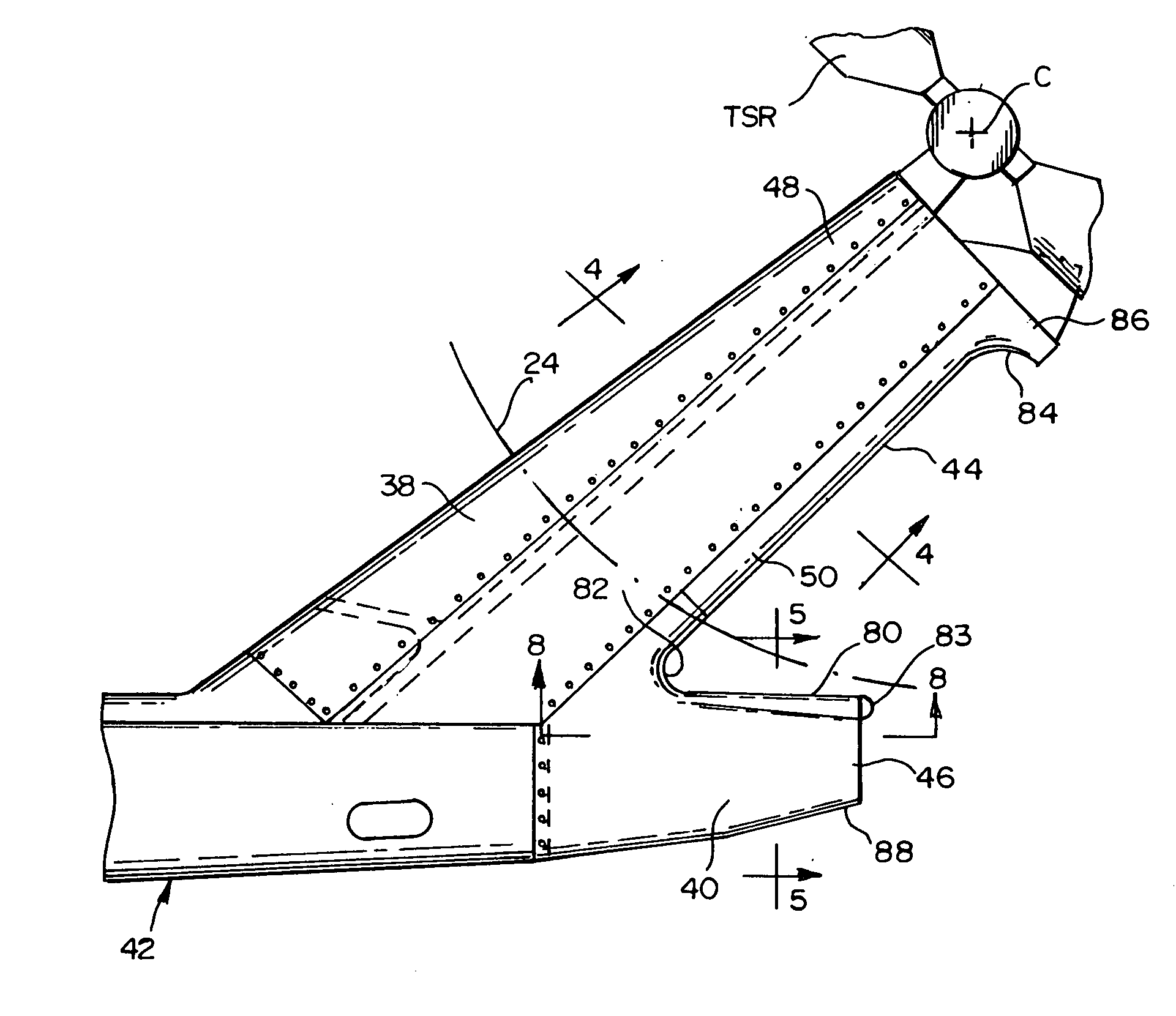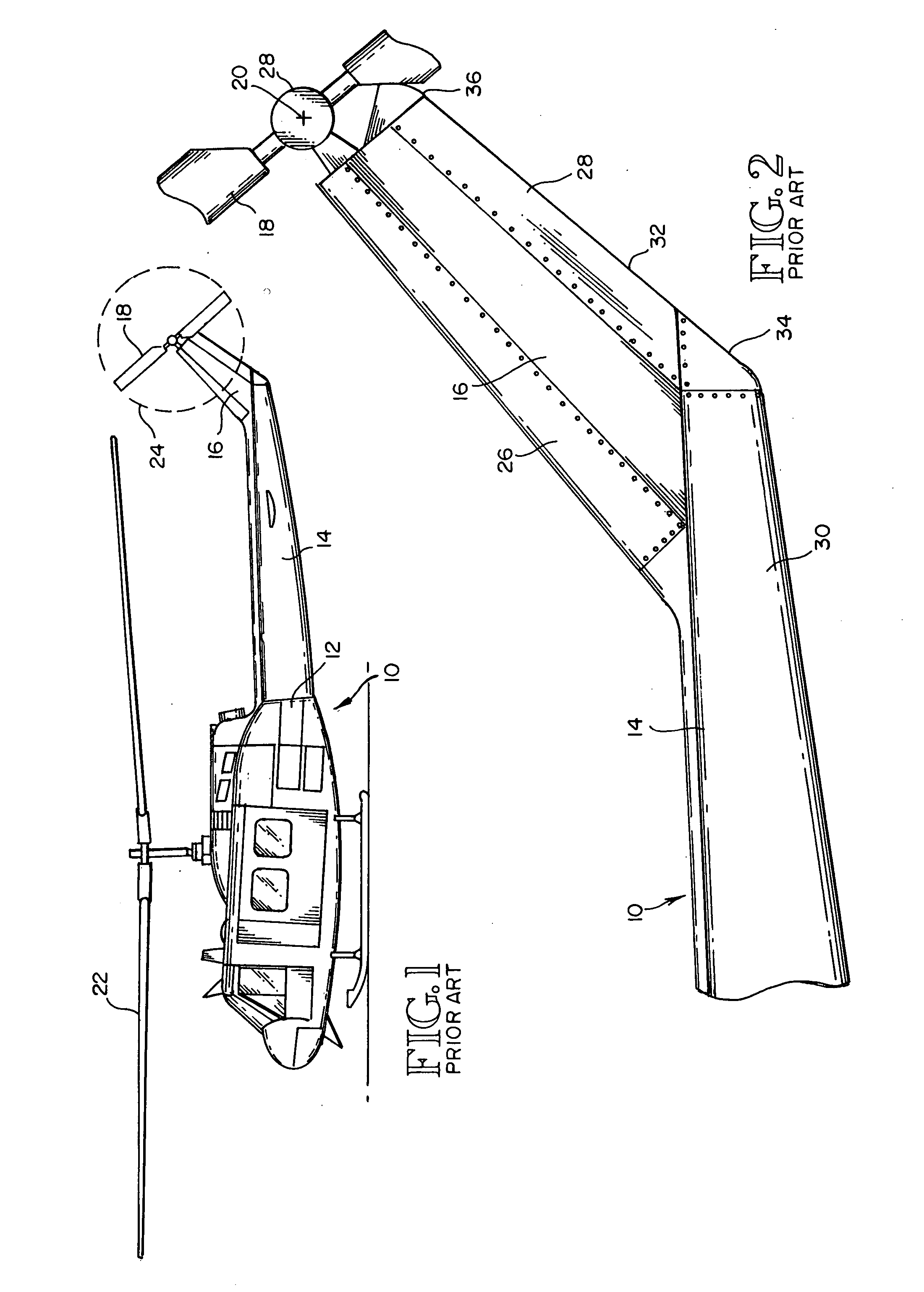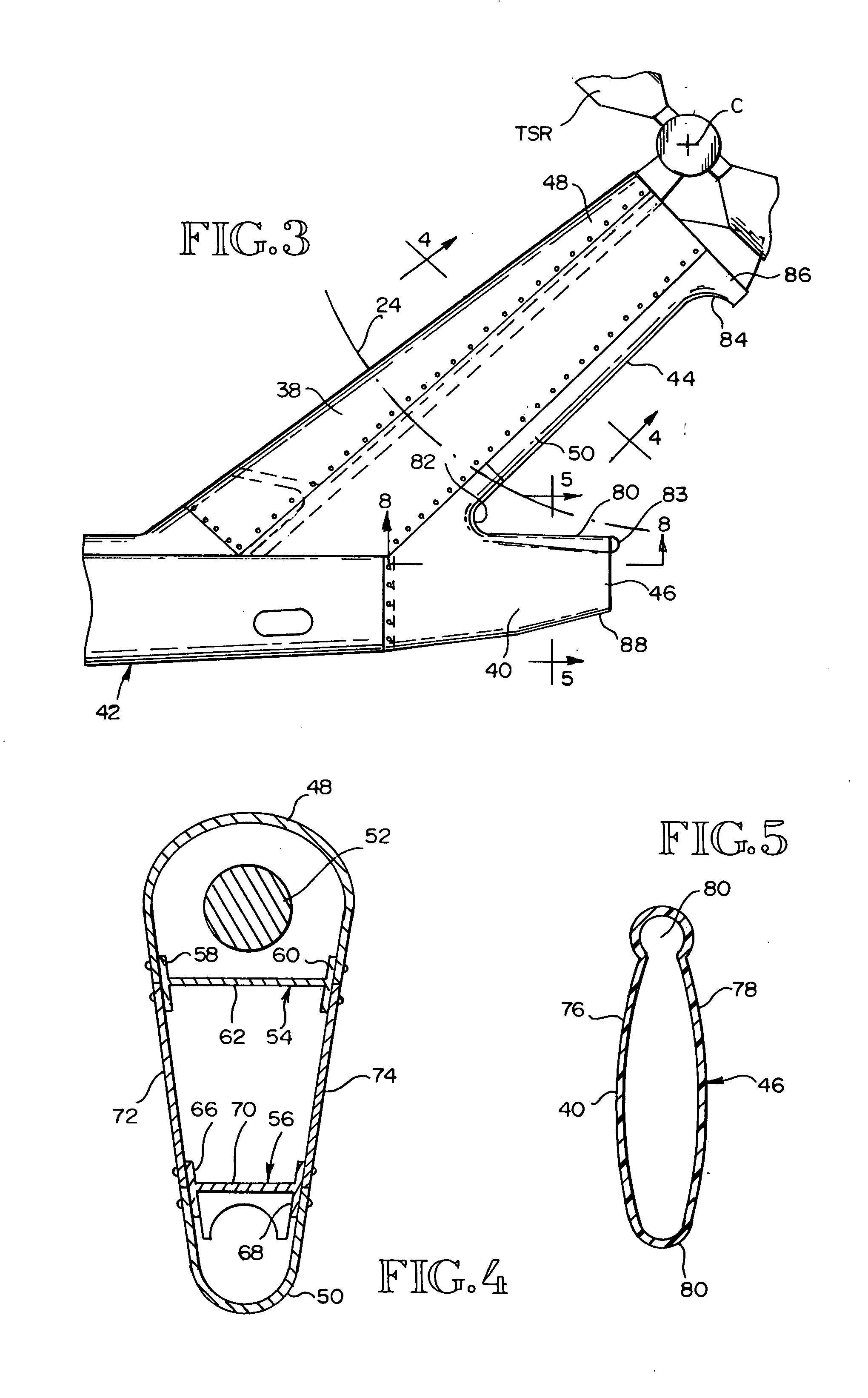Helicopter tail section and retrofit method
a tail section and helicopter technology, applied in the field of helicopters, can solve the problems of affecting the function and efficiency of the helicopter, the blockage effect of the conventional vertical stabilizer, etc., and achieve the effects of reducing the power requirements of the tail rotor, improving the flying qualities of the helicopter, and reducing the working of the tail section of the helicopter
- Summary
- Abstract
- Description
- Claims
- Application Information
AI Technical Summary
Benefits of technology
Problems solved by technology
Method used
Image
Examples
Embodiment Construction
[0020]FIGS. 1 and 2 show a prior art helicopter 10, characterized by a fuselage 12 having a tail section 14 and a vertical stabilizer 16 mounted on and extending upwardly and rearwardly from the tail section 14. A tail rotor 18 is mounted for rotation about a horizontal axis 20 at or above the upper end of the rear stabilizer 16. A main rotor 22 is mounted on the fuselage 12 near the front of the helicopter. This helicopter is generally like the helicopter disclosed by the aforementioned U.S. Design Pat. No. D278,227.
[0021] In FIG. 1, the fly diameter of the tail rotor 18 is designated 24. It defines the outline of a sideways airstream that is created by the tail rotor 18. The side location and direction of rotation of the tail section rotor TSR is a variable. It can be placed on either the left or the right side of the tail section 38. Also, it may rotate forwardly or rearwardly. It may push the airstream into the vertical stabilizer 38 or pull it into the vertical stabilizer 38. ...
PUM
 Login to View More
Login to View More Abstract
Description
Claims
Application Information
 Login to View More
Login to View More - R&D
- Intellectual Property
- Life Sciences
- Materials
- Tech Scout
- Unparalleled Data Quality
- Higher Quality Content
- 60% Fewer Hallucinations
Browse by: Latest US Patents, China's latest patents, Technical Efficacy Thesaurus, Application Domain, Technology Topic, Popular Technical Reports.
© 2025 PatSnap. All rights reserved.Legal|Privacy policy|Modern Slavery Act Transparency Statement|Sitemap|About US| Contact US: help@patsnap.com



